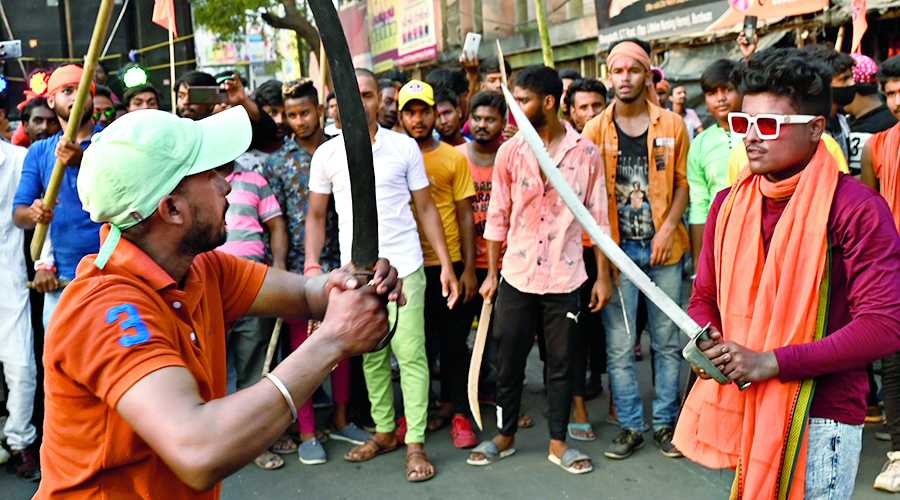Ram Navami has become an occasion for hostility, arrests and even deaths. It is strange that the celebration of a figure imagined as dutiful and a champion of peace — his war on Ravana’s kingdom is projected as righteous — should be a ruse for violence between two religious communities. Violence was reported across the country, notably in Maharashtra, Uttar Pradesh, Gujarat, Bihar, Karnataka, West Bengal and Delhi. The map of violence includes both Opposition as well as Bharatiya Janata Party-ruled states, but the common factor seems to be provocation. Saffron flags being put up next to the Jama Masjid in Mathura, for example, or loud slogans and music sounded before a mosque in another state when prayers were taking place, a deviation from the permitted route into a communally mixed area that allegedly occurred in West Bengal by a procession supposedly carrying open swords — such examples abound. In Delhi, the police had forbidden both a Ram Navami procession and namaz in a local park because of the unrest there last time. A number of right-wing groups took out a procession anyway, and worshipped within the park.
Although the BJP was not overtly part of the processions manned by right-wing groups such as the Bajrang Dal and others, Opposition parties have blamed it for the communal tension. In Maharashtra, the Opposition believed that one goal was to prevent its rally; the Bihar deputy chief minister alleged deliberate disruption of communal peace; in West Bengal, the cacophonous blame game, predictably, had at its centre the chief minister blaming the BJP and the BJP accusing her of ‘appeasement’. It is not clear, though, why more precautions were not taken in the state since such provocative processions have become routine in the last few years. In the BJP-ruled states, an exhibition of communal hostility could help to consolidate the Hindu vote once again. The most alarming aspect of Ram Navami appears to be the structured nature of the provocation — there were too many common elements in the processions to ignore that. So the Union home minister’s statement in Bihar that there would be no riots under the BJP and rioters would be hung ‘upside down’ — suggesting the ‘rioters’ were from one community only — made perfect sense. This approach can be negated only with good sense and a determined drive for peace.











